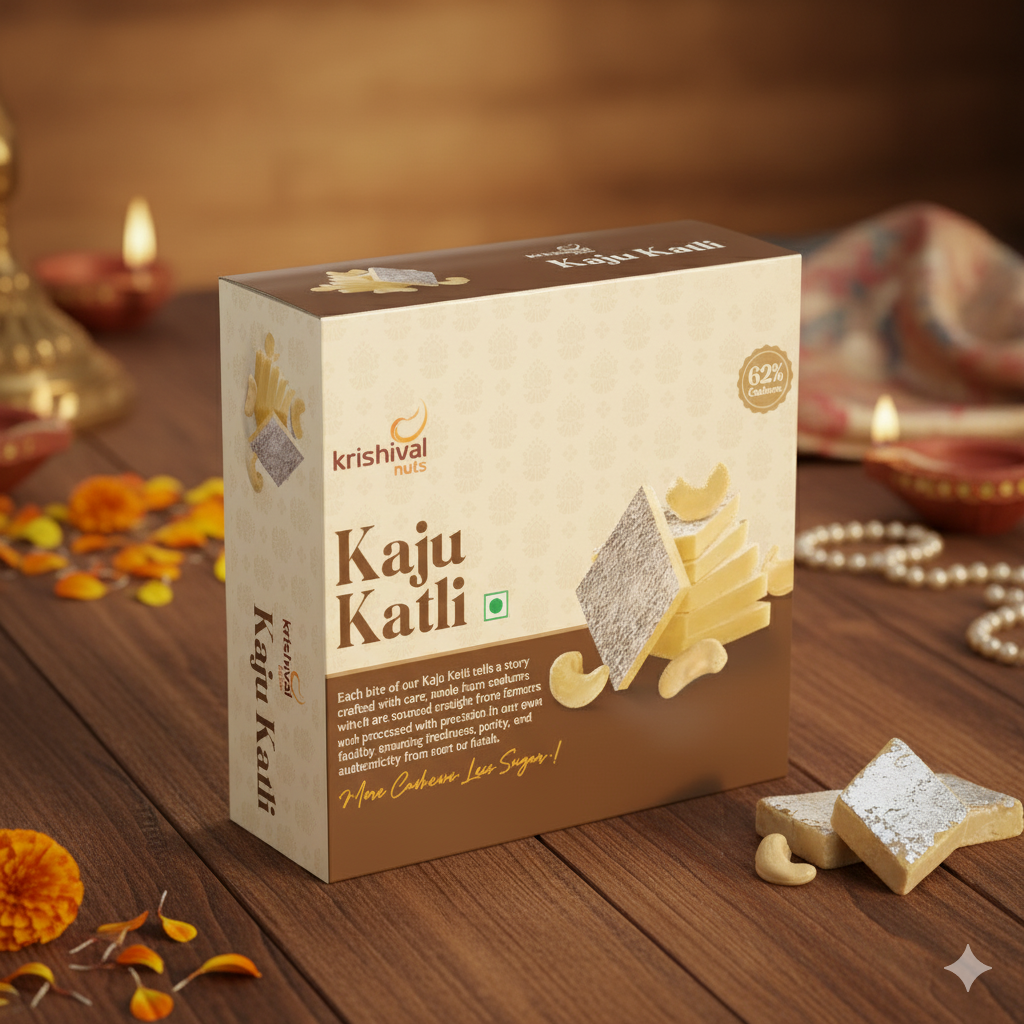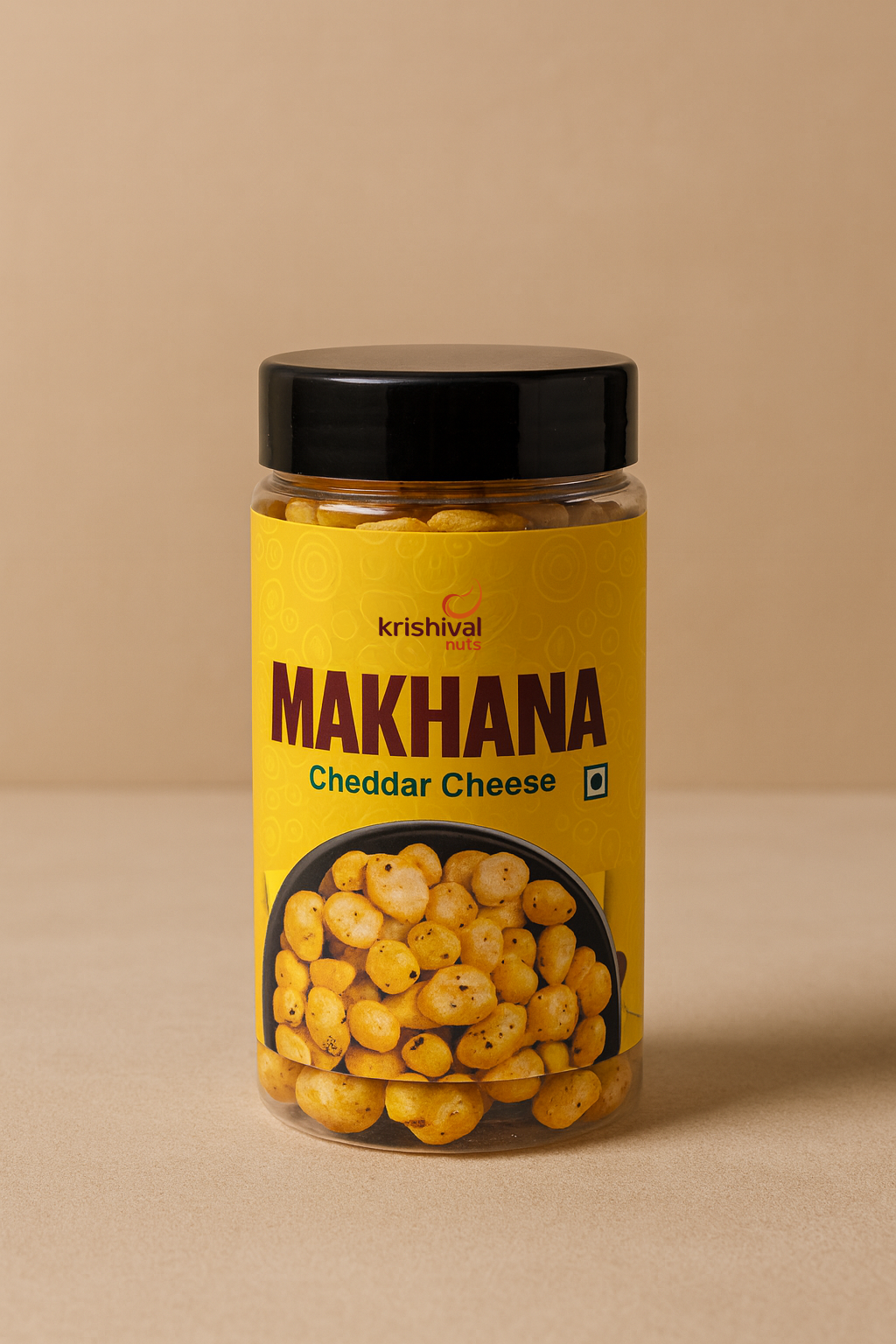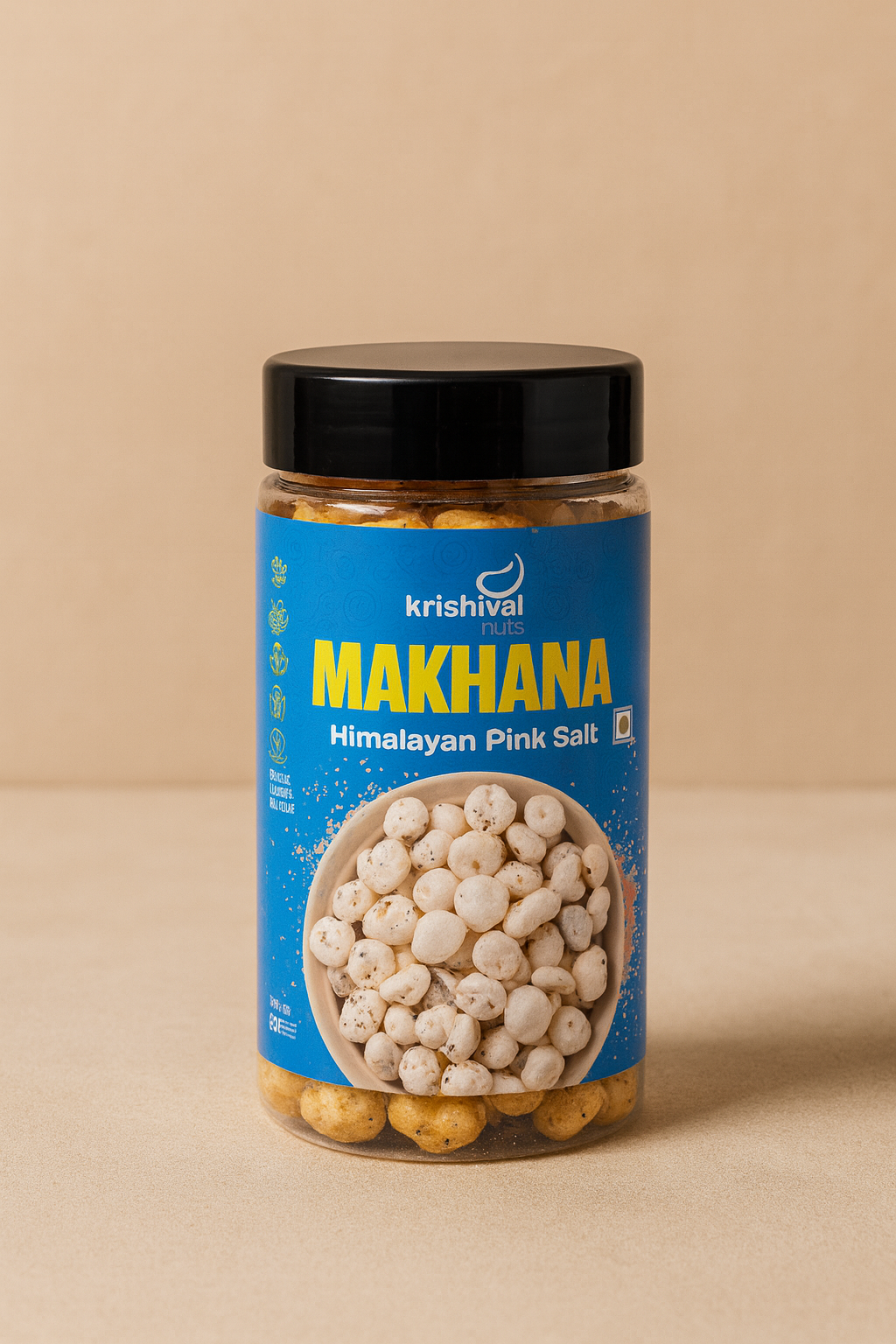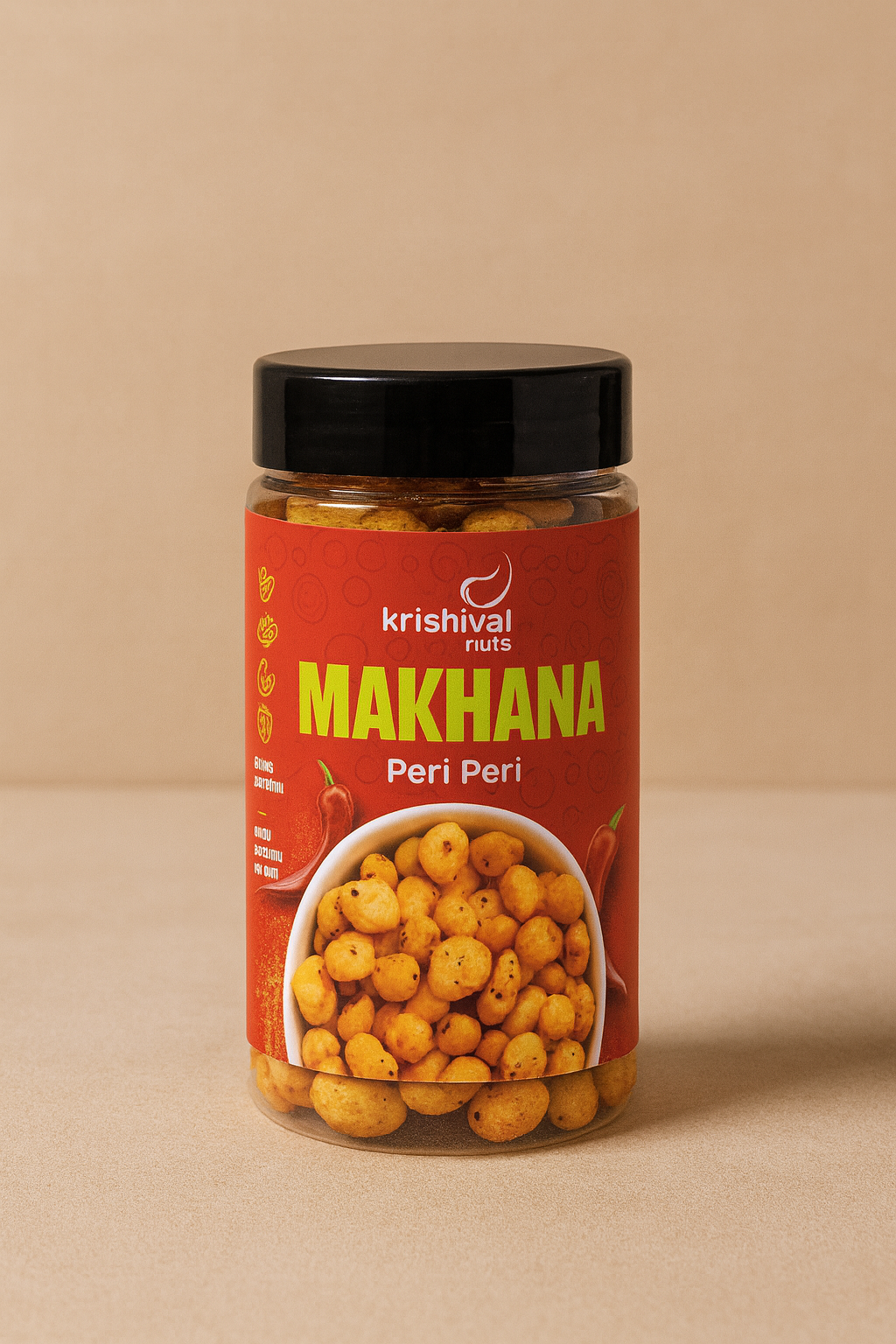Makhana, sometimes referred to as lotus seeds or fox nuts, is a traditional superfood that is praised for its many health advantages and high nutrient profile. Makhana is becoming more and more well-liked as a nutritious snack option since it provides a special combination of macronutrients and vital minerals that support a number of body processes. This natural meal is a powerhouse full of fibre and antioxidants that improve digestion, strengthen bones, and support heart health. A balanced, health-conscious lifestyle can benefit from the inclusion of makhana in your daily diet, which can improve general wellness. Let us discuss makhana nutrients and their benefits in detail in this comprehensive guide.
Table of Contents
Introduction
Nutritional Profile of Makhana
Makhana Nutrition: Key Nutrients
Protein
Fibre
Calcium & Magnesium
Potassium
Iron
Antioxidants (kaempferol, flavonoids)
Health Benefits Linked to Makhana Nutrition
How to Eat Makhana for the Best Nutritional Gains
Potential Sde Effects and Considerations
Conclusion
Frequently Asked Questions
Nutritional Profile of Makhana
Makhana is an energy-dense food since it is low in fat and calories but high in carbs and moderate in protein. It has roughly 65 grammes of carbohydrates, 9–10 grammes of protein, and less than 1 gramme of fat per 100 grammes. It is a good source of important micronutrients that are necessary for sustaining healthy body processes, including calcium, magnesium, potassium, phosphorus, and iron. Makhana, which is rich in dietary fibre, aids with blood sugar regulation and digestion. Its anti-ageing properties are further enhanced by the presence of antioxidants, including flavonoids and polyphenols, that fight oxidative stress.
Makhana Nutrition: Key Nutrients
Let us discuss the nutrients in makhanas in detail, with their proportion and the specific health benefits. Here are the ones you should know about.
Protein
Makhana offers 9–10 grammes of plant-based protein per 100 grammes, which is essential for satiety, muscle regeneration, and repair. Makhana is a great snack for sustained energy and recuperation, especially during fasting or low-calorie diets, because protein promotes metabolic processes and helps retain lean muscle mass.
Fibre
By encouraging regular bowel movements and avoiding constipation, makhana's high fibre content supports digestive health. Additionally, fibre helps reduce blood sugar levels and lessen insulin spikes by slowing down the absorption of glucose, which is advantageous for managing diabetes and controlling weight.
Calcium & Magnesium
Makhana contains calcium and magnesium, which increase bone strength and density and lower the risk of osteoporosis. Calcium is essential for bone production and cell signalling, while magnesium supports muscular function, nerve signalling, and metabolic processes. Together, these elements support skeletal health and prevent age-related bone problems.
Potassium
By neutralising the effects of sodium and preserving fluid balance, potassium aids in blood pressure regulation. By encouraging proper neuron and muscle contractions, it promotes cardiovascular health. Makhana's potassium helps maintain heart health and reduce the risk of hypertension naturally.
Iron
Through the synthesis of haemoglobin and the metabolism of energy, iron in makhana helps carry oxygen. A sufficient intake of iron supports vitality and cognitive function while preventing anaemia-related weariness. It's especially crucial for people who require more iron, including women and sportsmen.
Antioxidants (kaempferol, flavonoids)
Antioxidants found in makhana, such as kaempferol and other flavonoids, lower inflammation and scavenge free radicals. These characteristics may minimise the incidence of chronic illnesses like cancer and cardiovascular ailments, slow down the ageing process, and lessen cellular damage.
Health Benefits Linked to Makhana Nutrition
Now that you know the content and benefits of individual nutrients in makhana, we will highlight the overall health benefits that can be derived by consuming this superfood as a part of your regular diet. Here are the ones you can derive by integrating makhanas into your daily routine.
-
Support for Weight Management: The high fibre content of makhana slows digestion, which increases satiety and lessens overeating. This, together with its low calorie content, makes it a perfect snack for controlling weight. Sustained satiety promotes long-term calorie control and fat loss by preventing unhealthy snacking.
-
Blood Sugar Stabilisation: Makhana's low glycaemic index (GI ≤ 55) prevents abrupt blood sugar increases by releasing glucose into the system gradually. Its fibre content promotes stable insulin levels by further slowing the absorption of carbohydrates. Because of this, it is a diabetic-friendly diet that lowers the risk of insulin resistance and promotes efficient blood sugar management.
-
Heart Health Improvement: By balancing sodium levels and relaxing blood arteries, potassium and magnesium, which are abundant in makhana, help control blood pressure. Its antioxidants also lessen inflammation and oxidative stress, which lowers the risk of cardiovascular illnesses and improves heart health in general.
-
Support for Bones and Joints: Makhana's calcium and magnesium are essential for preserving healthy bones and halting bone loss. Magnesium is required for bone production and muscular function, whereas calcium helps with bone density and structure. When combined, they promote bone health and aid in the prevention of degenerative diseases like osteoporosis.
-
Improved Digestion and Detoxification: By encouraging easy bowel movements and avoiding constipation, a high dietary fibre intake facilitates digestion. Additionally, fibre functions as a natural detoxifier by binding waste and pollutants for removal. This promotes the general health of the digestive system and keeps the gut flora in good condition.
-
Cognitive and Neuron Support: Makhana contains thiamine, or vitamin B1, which is essential for energy metabolism and neuron function. By boosting neurotransmitter function, increasing cognitive function, memory, and lowering mental tiredness, it promotes brain health.
-
Anti-ageing and Skin Benefits: Makhana's flavonoids and kaempferol, two antioxidants, fight free radicals that harm cells, delaying the ageing process. These substances lessen inflammation, shield skin cells from oxidative damage, and may help preserve suppleness and a youthful appearance.
How to Eat Makhana for the Best Nutritional Gains
Consume around 30 to 50 grammes of makhana each day, or a modest handful, to gain its nutritious benefits. To retain its nutrition, it is best roasted with little oil and seasonings. Steer clear of deep-frying, which reduces health advantages and adds unhealthy fat. For extra texture and nutrients, makhana can be added to snacks, combined with almonds, or sprinkled over salads and soups. It adds flavour and nutrients to traditional desserts as well. Making makhana with yoghurt or fresh fruit increases the amount of protein and vitamins consumed. It fits a variety of dietary requirements, including vegan, gluten-free, and weight-management plans, because it is low in calories and gluten-free. The best possible absorption of makhana's minerals and antioxidants is ensured by regular consumption, providing long-term health advantages.
Potential Side Effects and Considerations
Most people can safely consume makhana, but because of its high fibre content, excessive consumption may result in digestive problems like bloating or constipation. First-time customers should exercise caution because rare allergic responses can happen. To prevent interactions, people with certain medical conditions or those taking medication should speak with medical professionals. As with any foods high in fibre, negative effects are minimised by introducing them gradually and drinking enough water. Makhana is a safe and healthful snack when carefully included in the diet because moderation is essential to avoiding nutritional imbalances or gastrointestinal distress.
Conclusion
Makhana's rich composition of proteins, fibres, minerals, and antioxidants makes it a nutrient-dense superfood with many health advantages. Its special makeup aids in digestion, heart and bone health, weight control, and anti-ageing initiatives. Including makhana in your regular diet offers a healthy, low-calorie snack choice that can accommodate a variety of dietary requirements. It is a vital component of balanced eating regimens due to its ancient dietary roots and contemporary nutritional science. People should embrace makhana as a delicious and wholesome dish since regular, moderate use can improve long-term health and vitality.
Frequently Asked Questions
What are the main nutrients found in makhana?
Makhana is high in fibre, protein, and carbs. They also include important minerals like iron, calcium, magnesium, potassium, and phosphorus. Additionally, makhana contains antioxidants that lessen oxidative stress, such as flavonoids and polyphenols. Makhana is a nutritious superfood that supports general health, digestion, bone strength, and cardiovascular function because of its blend of macronutrients, micronutrients, and antioxidants.
How much protein does makhana contain?
Makhana is a useful plant-based protein source because it has about 9 to 10 grammes of protein per 100 grammes. This protein is helpful for weight control and fitness objectives since it promotes muscle maintenance, repair, and satiety. Vegetarians and vegans seeking high-quality protein from natural foods would benefit from its moderate protein level. Frequent consumption can enhance metabolic function and energy levels.
Is makhana good for digestion?
Yes, because of its high dietary fibre content, makhana is great for digestion. In addition to reducing constipation and promoting regular digestion, fibre aids in the normalisation of bowel motions. Additionally, it helps to lessen stomach discomfort and maintain a healthy gut microbiota. Fibre also slows down the absorption of carbohydrates, which helps maintain gut health and a stable blood sugar level.
Can makhana help with weight loss?
Due to its low calorie and high fiber content, makhana can keep you fuller longer, aiding weight Because makhana is low in calories but high in fibre and protein, which increase feelings of fullness and decrease overeating, it helps people lose weight. Because of the delayed digestion of its complex carbs, insulin surges that could cause fat storage are avoided. Makhana is a wise, healthy choice for people trying to lose or maintain weight because it helps control appetite and calorie intake when eaten as a snack or as part of meals.
How does makhana benefit heart health?
Potassium and magnesium, two minerals vital to cardiovascular health, are found in makhana. Magnesium improves cardiac muscle and neuron function, while potassium balances sodium levels to assist in controlling blood pressure. Its antioxidant components minimise the risk of heart disease by reducing oxidative damage to blood vessels and inflammation. Frequent consumption of makhana can enhance vascular health, lower blood pressure, and improve heart function.
Does makhana have antioxidant properties?
Yes, makhana has a lot of antioxidants, including kaempferol and flavonoids. These substances lessen oxidative stress and neutralise free radicals, which are important contributors to ageing and chronic illnesses like cancer and heart disease. Makhana's antioxidants improve skin health, lower inflammation, and enhance cellular health. Including makhana in your diet promotes long-term wellness and protects the body from oxidative damage.
Is makhana beneficial for bone health?
Calcium, magnesium, and phosphorus—minerals essential for healthy bones and teeth—are abundant in makhana. Phosphorus cooperates with calcium for bone mineralisation, magnesium supports muscular function and bone production, and calcium offers structural support. Frequent use promotes joint health, lowers the risk of osteoporosis, and maintains bone density.
Can makhana help regulate blood sugar?
Makhana raises blood sugar levels gradually and steadily since it has a low glycaemic index. Because of its fibre content, glucose absorption is further delayed, avoiding spikes and crashes that could be detrimental to metabolic health. Because it promotes steady insulin levels and helps regulate blood sugar, makhana is a diabetes-friendly food. For those controlling diabetes or trying to avoid blood sugar swings, it is advised as part of a balanced diet.
What are the best ways to consume makhana?
Roasting makhana with little oil and light spices preserves its nutritional profile, making it the best way to eat it. It can be used in desserts, added to salads, combined with yoghurt and almonds, or consumed as a snack. To keep it healthful and low in fat, steer clear of deep-frying. Because of its adaptability, makhana is simple to use in a variety of recipes. Nutritional advantages are increased when combined with foods high in protein.
Are there any side effects of eating makhana?
For the most part, Makhana is safe. However, the high fibre content of excessive eating might result in digestive discomfort like gas, constipation, or bloating. Although they are uncommon, allergic reactions can occur. Healthcare professionals should be consulted by people with certain conditions or those taking medication. For the majority of people, makhana is a safe and advantageous dietary addition since negative effects can be reduced with gradual introduction and proper hydration.










